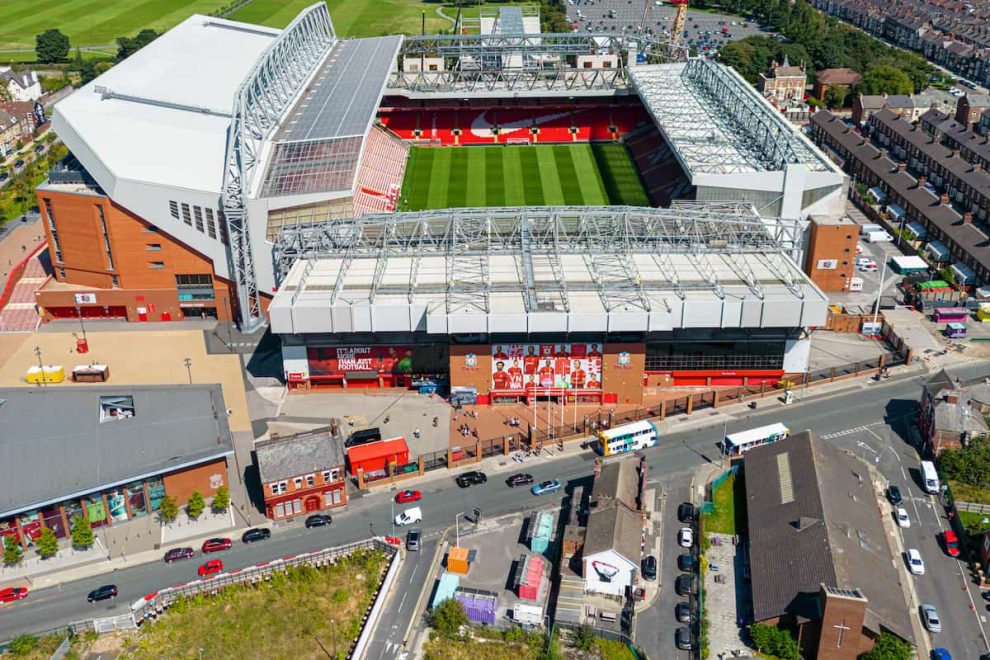Anfield, the renowned football stadium in Liverpool, England, stands as a testament to the unwavering devotion and passion of football fans worldwide. Home to Liverpool Football Club (LFC), Anfield has a storied history, resonating with the echoes of legendary players, exhilarating matches, and moments that have left an indelible mark on the sport. From its humble beginnings to its status as one of the most iconic stadiums in the world, Anfield continues to be a sacred ground for football enthusiasts, embodying the essence of the beautiful game.
The Birth of Anfield
Anfield was originally built in 1884 by Everton Football Club, before LFC came into existence. Situated in the Anfield area of Liverpool, the stadium started as a modest ground, with a capacity of around 20,000 spectators. However, due to a disagreement between the club’s board and the stadium owner, John Houlding, Everton moved to a new ground, leaving Anfield vacant.
The Rise of Liverpool FC
John Houlding, a prominent businessman and fervent football supporter, decided to create a new football club to fill the void left by Everton’s departure. Thus, on March 15, 1892, Liverpool Football Club was born, and Anfield became its cherished home. The first match at Anfield was played on September 1, 1892, and the stadium quickly began to witness the growth of a footballing giant.
The Kop: The Heartbeat of Anfield
One of the most iconic features of Anfield is the Kop stand. Originally a simple terrace, it was later roofed and expanded to become the Kop grandstand, named after the famous Battle of Spion Kop during the Second Boer War. The Kop is where the most passionate Liverpool supporters congregate, creating an electrifying atmosphere that has become legendary in the world of football.
European Glory at Anfield
Anfield has witnessed countless historic moments, but perhaps none are more legendary than Liverpool’s European exploits. During the 1970s and 1980s, under the management of Bill Shankly and later Bob Paisley, the club achieved unprecedented success in European competitions, including five UEFA Champions League (formerly European Cup) titles. The atmosphere at Anfield during European nights has earned the stadium a reputation as one of the most intimidating places for visiting teams.
The Hillsborough Tragedy
Despite its moments of triumph, Anfield also experienced profound tragedy on April 15, 1989, during the Hillsborough disaster. A crush occurred in the stadium’s Leppings Lane stand during an FA Cup semi-final match, resulting in the loss of 96 innocent lives. This tragedy deeply affected the footballing community and led to significant changes in stadium safety regulations.
Redevelopment and Modernization
Over the years, Anfield has undergone several renovations to meet the demands of modern football. In the early 1990s, the famous Spion Kop terrace was replaced by an all-seater stand, significantly reducing the stadium’s capacity. Subsequent redevelopment projects included expanding the Main Stand and Anfield Road End, resulting in the current capacity of approximately 53,000.
The Spirit of ‘You’ll Never Walk Alone’
Anfield is perhaps best known for the emotional rendition of “You’ll Never Walk Alone” by its passionate supporters before every home game. The song, originally from the Rodgers and Hammerstein musical “Carousel,” has become the club’s anthem, symbolizing unity, solidarity, and an unbreakable bond between the team and its fans.
Conclusion
Anfield remains an enduring symbol of football heritage and unwavering support. From its humble beginnings to becoming a fortress of football passion, the stadium has witnessed moments of joy, sorrow, and triumph. As long as the heart of football beats, Anfield will continue to inspire generations of fans and players alike, solidifying its place in the pantheon of football’s greatest arenas.



















Add Comment